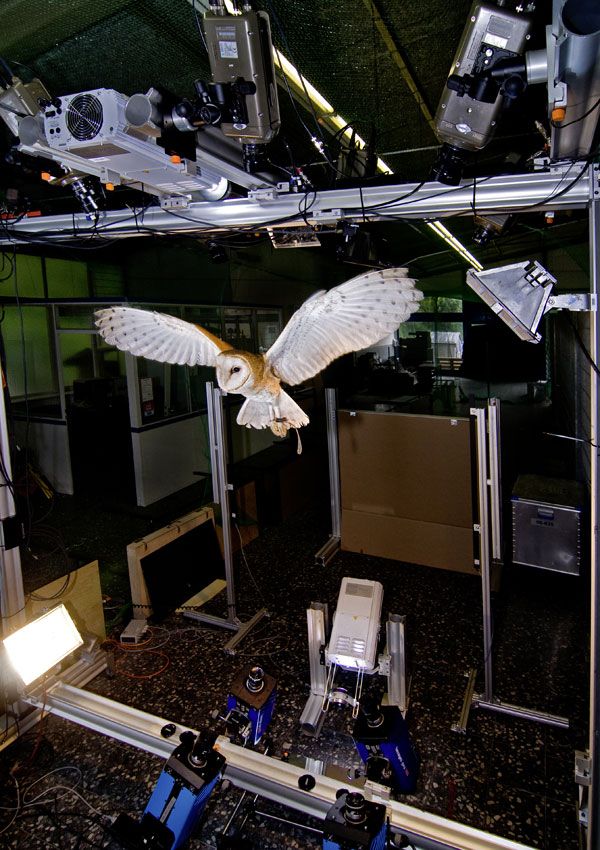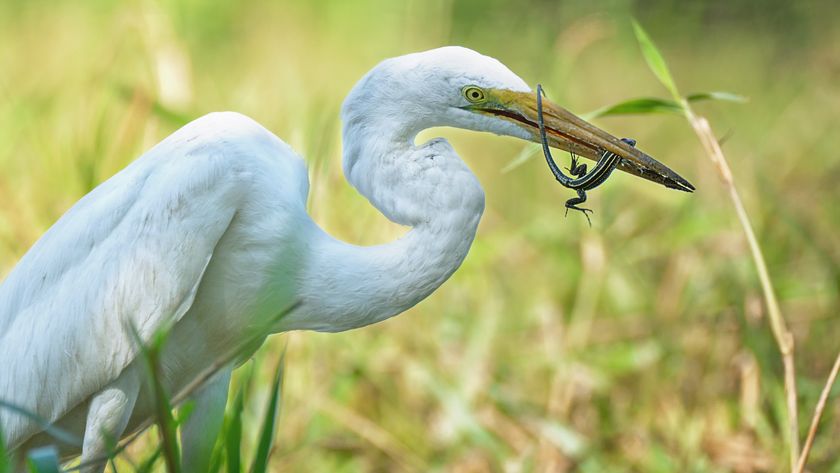As Two Owls Flex Wings, Scientists Record and Learn

A pair of owls is helping German scientists figure out the secrets of bird flight. A camera system travels along with the two barn owls, Happy and Tesla, collecting data as the birds make short flights across a room toward dinner.
So far, the scientists have collected data from Happy, the older of the pair, on how an owl moves during gliding flight. They are now moving on to study what happens as the birds beat their wings, according to Thomas Wolf, a researcher at the German Aerospace Center's Institute of Aerodynamics and Flow Technology. At 10 months old, Tesla is now old enough to participate in the beating-wing flights. [Whooos in There? Gallery of Amazing Owls]
Owls are good study subjects because they start flying slowly, making it easier for the system to track them. However, studying how the shape of a bird's wing changes during flight and overall flight patterns can be tricky, Wolf said, since the bird's path is not predictable, even in a closed room with food as a motivation.
"In some of the tests, the owl may fly slightly higher, or slightly lower; it all depends. Although this may cause difficulties, the owls should not be influenced in any way, since we want to ensure that the flight is as authentic as possible," Wolf said.
In the new method, Wolf projects a pattern of light onto the top and bottom of a flying owl's wings and records it on video, using eight cameras. These track the owl from above and below on a frame that moves along with the bird as it flies. He and his colleagues use data drawn from this pattern together with the stereo information of the cameras to calculate the shape of the wing surface and track the sequence of movements.
For the gliding flights, the cameras were stationary. Now, the owls are becoming accustomed to being followed by the frame carrying the camera system, Wolf said.
While studying gliding flight, they recorded about 100 barn owl flights, but they will need to collect more from the wing-beating flight, he said.
Sign up for the Live Science daily newsletter now
Get the world’s most fascinating discoveries delivered straight to your inbox.
The results will be used to figure out how air flows around each wing as the owls fly. In addition to revealing more about bird flight, Wolf and colleagues said, the information could be applied to small, unmanned aerial vehicles.
The research is being done in collaboration with RWTH Aachen University, where the owls make their flights, and the German Armed Forces University in Munich.
You can follow LiveScience senior writer Wynne Parry on Twitter @Wynne_Parry.












